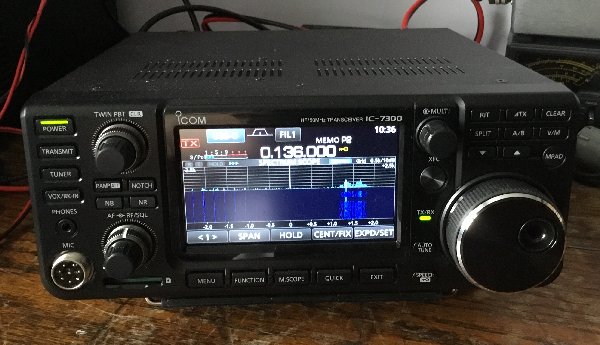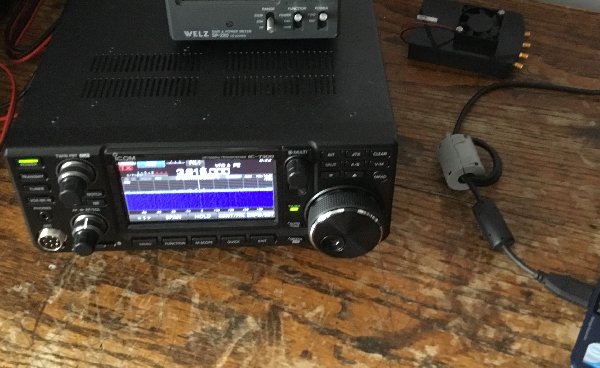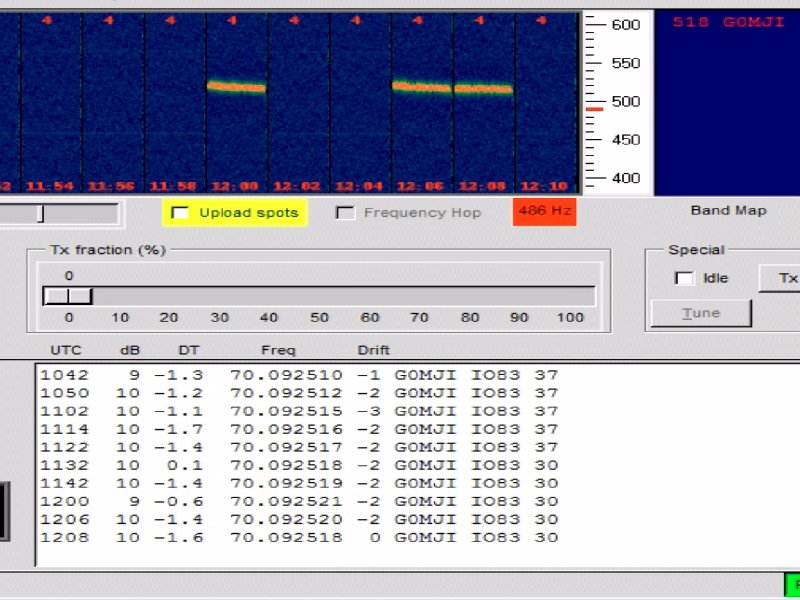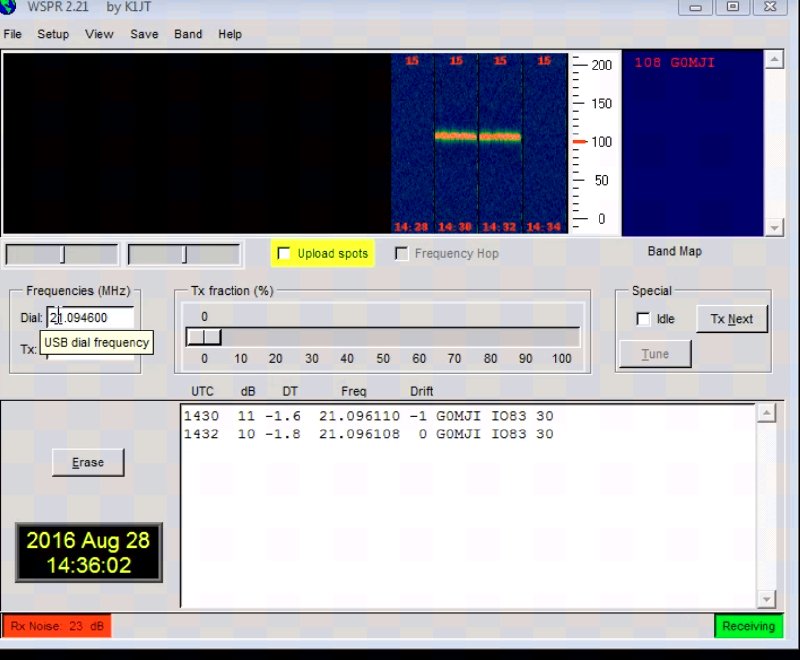IC-7300 Foibles
Before I start let me just say I love this radio. I've wanted
one since I first heard rumours of it. My friend Chris, M0NKA, invented a kit
version of stand-alone SDR some years back and it is good to
see one of the major manufacturers have taken note. The best
thing about the mcHF and the IC-7300 is the audio. There is
something very pure about it. When I was into guitar playing I
searched for the elusive 'tone' most guitarists try to obtain:
amp/pickup/guitar combination. Needless to say I never found
it. But with standalone SDR I think the SSB version can be
achieved.
So, understand this: I LOVE my IC-7300.

'Oh You Pretty Thing'
That being said nothing is perfect. This site concerns itself
primarily with Wspr (focused upon LF/MF/4M) and here the news
is mixed.
The positive:
With the wideband TX mod (mine came with this at no extra
cost, plenty of info online) you can use it straight out of
the box on 630m Wspr. Okay you will need an external LPF as
well and (probably) some kind of amplification. But it is
ready to go. You will also need a monster antenna but this is
outside the remit of this page - for now. The first evening
with the radio I had 4w into my antenna and spots of 300km+. I
did see as much as 10w depending on antenna configuration, but
I decided to keep the drive way down. The ERP for 4w out of an
antenna 1/500 efficient - well let's just say it isn't much.
BUT THE IC-7300 does transceive on 630m. BONUS. Also, if you
turn off the MF attenuator and use your LPF carefully it is
possible to set up quite a sensitive RX station on 136khz as
well. My IC-7300 does not produce measurable RF on 136khz. One
slight nuisance was when I put my laptop on charge it wiped
out 630m rx. The beauty of having a single USB lead between
radio and netbook means no interface (Signalink et al)
whatsoever. Unfortunately it brought RFI from the netbook
charger circuitry into the radio. However a clip on ferrite
core sorted it (I bought a huge box of these years ago, worth
their weight in gold, well almost).

Clip on a ferrite
Now for the not so good: 4M Wspr
As an experienced Wsprer I like to test for stability whenever
I get a new transmitter - I just do. I was surprised to
discover that on 14mhz and above there is negative drift on a
2 minute Wspr over. This shows itself as -1hz drift up to
50mhz. On 4m this becomes -2hz. Now this is not good news for
anyone who wants to be spotted on 4m. There is enough drift
created by path conditions on 4m as it is, you do not want to
be starting from a baseline of -2hz. I have seen this pattern
before when testing other equipment. It indicates tiny
variation in frequency at the fundamental frequency generating
level; this is then exagerated by multiplication such that
higher frequencies show more variation. What to do?
Well short of returning the radio which I am loath to do I
remembered a similar scenario with my friend Geoff, G0LUJ, and
his IC7100. Geoff discovered if a second TX is made
immediately then the second TX tended to show less drift. I
tried this, 'The LUJ Method', and found the second
transmission displayed 0 drift. Okay, I can live with that.
Not ideal but I did not purchase this radio solely for 4m
Wspr, I already have an FT847 for that. Otherwise -1hz on HF
is irrelevant. The 7300 was immediately spotted worldwide with
-1hz. It would appear, that within my radio at least, there is
a slight change when the TX is first energised. I can confirm
the PA is not the issue. With 0% drive or 100% drive (not
advisable on Wspr) the drift was exactly the same. This is an
older version of Wspr used for illustrative purposes, it is
the same with newer WSJT-X versions.
2nd TX with zero drift
Home




